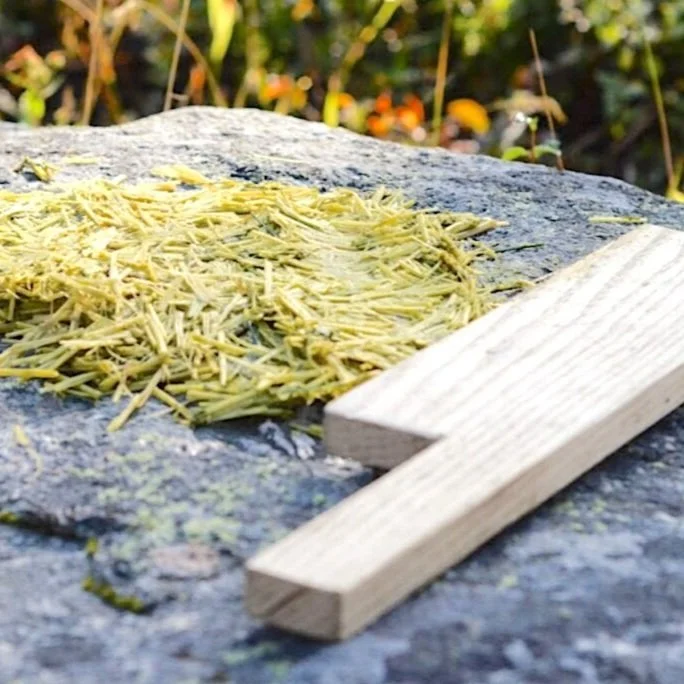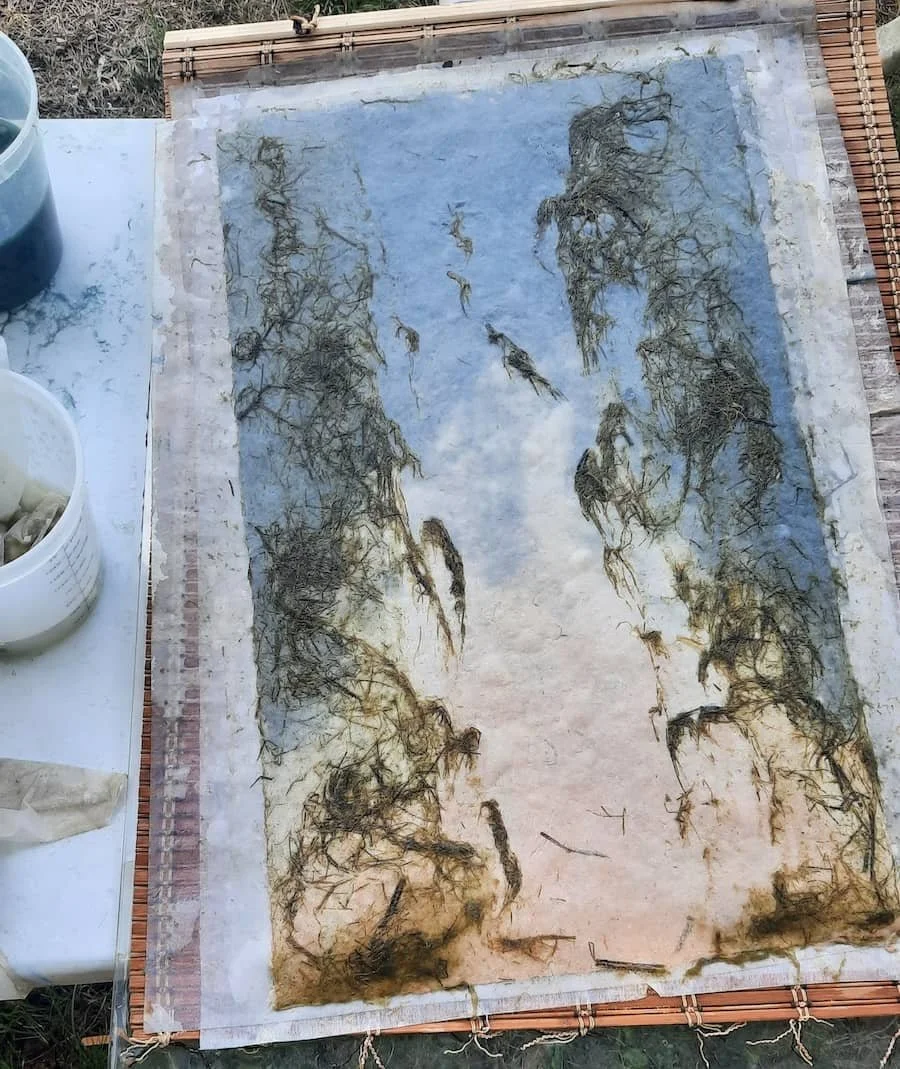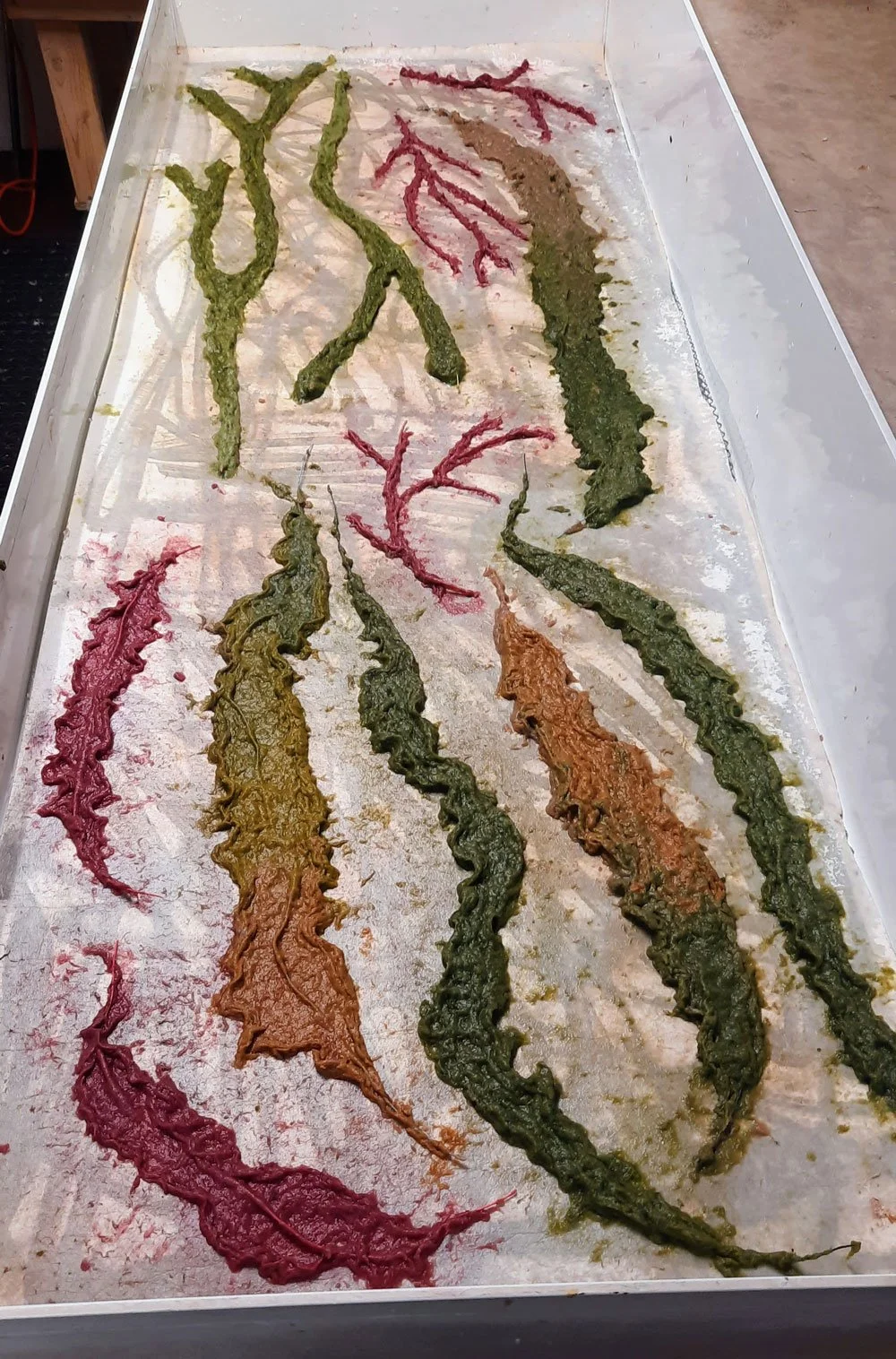Photo by Sasha Israel
About
I’m May Babcock, a papermaking artist using natural materials in New England. I grew up in rural Connecticut surrounded by forests, rivers and ponds, vegetable and flower gardens. I received scholarships to attend the University of Connecticut for a BFA in painting and printmaking, and went to Louisiana State University for my MFA and to learn papermaking.
As a biracial artist of Taiwanese-Chinese descent I never felt like I belonged. Exploring specific sites is a search for belonging, plant fibers, and connection with place.
Artist Statement
I’m an eco-centric artist who uses foraged plants for papermaking, bringing the voice of waterways, plants, and place into contemporary art.
I begin by immersing myself in sites that resonate, where I open my awareness. Each season, I collect abundant plants, seaweed, sediment, sketches, and research. As a biracial artist of Taiwanese-Chinese descent and a second and third generation immigrant, witnessing place is a search for belonging and spiritual connection.
Papermaking itself and many so-called “invasive” plants here originate from China. Making paper and collaborating with diasporic plants connect me with my ancestry. Plants also tell the stories of place and respond to sites distressed by humans.
In the studio, I craft plant fibers into paper pulp, responding to site materials to reveal a range of art works. Innovative papermaking techniques fuse the watery fibers into textured paintings and paper pulp sculptures. On site, the same natural materials become Earthworks and expansive installations that change with the site.
My art creates ecologies between people, plants, and paper, giving opportunities for healing and deep communication in a climate-changed world.
So-called “invasive” plants are used as fibers for papermaking.
Pulping plant fibers by hand, on a rock in the wilderness.
I mix water with fibers to make paper pulp, and pour colored pulps to form a ‘pulp painting’
Select Exhibitions + Public Art
RISD Museum of Art, Fitchburg Art Museum, New Bedford Whaling Museum, The National Taiwan Craft Research and Development Institute, The Center for Book Arts, Danforth Art Museum, Ogden Museum of Southern Art, Louisiana State Museum, Roger Tory Peterson Institute, URI Providence Campus Gallery, Society of Arts & Crafts, World’s Fair Gallery. Public art: The Trustees of Reservations, Brown University, Illinois State Museum, T.F. Green International Airport, the Rhode Island State House, Providence City Hall.
Education
M.F.A. Louisiana State University, B.F.A. University of Connecticut (Summa Cum Laude)
Collections
Boston Athenaeum, RISD Museum, Winifred Ross Reily Collection, AC Hotel Madison, Private collections.
Teaching
Rhode Island School of Design, School of the Museum of Fine Arts at Tufts University, Brown University, Penland School of Crafts, Women's Studio Workshop, Pyramid Atlantic Art Center.
Select Press + Publications
Boston Globe, Art New England, Hand Papermaking Magazine, Rhode Island Monthly, International Association for Great Lakes Research, Motif Magazine, Providence Art & Letters, Cyanotype: The Blueprint in Contemporary Practice.
Select Awards
New England Foundation for the Arts Public Art Learning Grant, Citizen Citation for Environmental Education from the Mayor of Providence RI, National Arts Strategies Creative Community Fellowship, NEA Our Town Grant unLOCK, Brown Arts Initiative Annual Mural Grant, Rhode Island Environmental Education Association Annual Summit Keynote Speaker, Rhode Island State Council for the Arts Project Grant, White Mountain National Forest Artist in Residence, Salve Regina University Artist in Residence, Cape Cod National Seashore / Peaked Hill Trust Artist in Residence, Guadalupe Mountains National Park Artist in Residence, Spring Island Artist in Residence, Absaroka-Beartooth Wilderness Artist in Residence.
My Papermaking Process
Outside the Studio
I was guest editor for the ‘Ecology and Paper’ issue of Hand Papermaking magazine.
I love plants (can’t you tell?), and am a URI Master Gardener and a Certified Invasive Plant Manager. I also volunteer for a horticultural therapy garden, The Garden at Daggett Farm.
Main hobby: telling my partner how healthy lentils are every time we eat lentils.
You may also know me as the founder of Paperslurry.com.
Making a paper pulp painting on a beach
Collecting water chestnut pondweed, a fiber source for papermaking.
For further reading:
Read my Master’s Thesis, Latent Landscape
Take a look at my full CV if you dare
View reviews and press
Learn about the intersection of ecocentrism and creativity from Haumea Ecoversity.
Each series in my portfolio has more you can explore.
Red seaweeds foraged from Narragansett Bay, Rhode Island.










